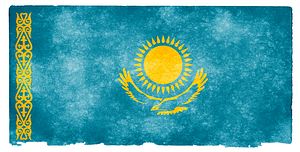For whatever reason, mid-December has always been a momentous time for Kazakhstan. A quarter-century ago, Kazakhstan became the final Soviet republic to declare independence. But five years earlier, the Kazakh capital — Alma-Ata (Almaty) — had been the site of nearly unprecedented protests and riots. Snidely dismissed as “nationalistic” by the authorities in Moscow, those events 30 years ago have significant relevance for modern Kazakhstan which this year saw renewed protests.
In hindsight, it’s easy to place the Zheltoksan (Kazakh for “December”) events in line with others which lead to the collapse of the Soviet Union. While many respected historians and commentators remark on the “surprise” that was the Soviet collapse, the cracks were not overlooked by all.
In a 1988 article, The Economist declared, “The surprising thing, in a country with over 140 different national groups, is that conflicts were so well hidden for so long. Glasnost has changed that.” The article isn’t quite prophetic but offers a view uncorrupted by the clarity of hindsight. It argued that while the prospect of the Soviet Union’s non-Russians banding together to overturn the system was worrisome, an even bigger worry was “the possibility of a nationalist backlash from Russians, who are about half the Soviet population.” Pieces of the Soviet Union began breaking away beginning with Lithuania in 1990, but the coup attempt in Moscow ultimately kicked off the collapse.
The 1988 article cites the 1986 riots in Kazakhstan as evidence of a growing backlash to Gorbachev’s policies.
On December 16, 1986 the First Secretary of Kazakhstan’s Communist Party, Dinmukhamed Kunayev, was dismissed from the post he’d held since 1964. The Kazakh economy was cratering, and given its place as a top GDP in the USSR (trailing Russia and Ukraine), its stagnation was a serious problem. Kunayev was replaced by Gennady Kolbin, a Russian who had reportedly never lived in the Kazakh SSR before.
The next day hundreds of protesters gathered in the streets of Alma-Ata. State-run media labeled the protesters as rabid nationalists. TASS reported that students had been “incited by nationalistic elements.” TASS categorized the protestors as “hooligans, parasites and other antisocial persons” who has “resorted to unlawful actions against representatives of law and order.”
But as a 1996 RFE/RL look back at the riots noted, participants and witnesses said, “the protest was not mainly driven by nationalist fervor, but rather by anger at Moscow’s arbitrary control over local politics.” Kolbin’s ethnicity was less an issue than his ignorance of Kazakhstan. “There was no greater demonstration of Moscow’s colonial arrogance than its dispatching of a Party bureaucrat with no knowledge of Kazakhstan to rule from Almaty. “
Estimates vary, but it’s believed the ranks of protester grew into the thousands and the state response was harsh. Thousands were arrested and KGB, security forces, and Russian factory workers fought with the students in the streets, the protests morphed into riots. RFE/RL cites an official report — made public after the Soviet Union’s collapse — which estimated that 100 people froze to death after being stripped, driven out of the city and forced to walk back.
Although the official count includes only three deaths, a 1996 U.S. Library of Congress country study on Kazakhstan puts the estimate as “at least 200” with some accounts estimated casualties as more than 1000.
Nursultan Nazarbayev was at the time two years into a posting as prime minister. As Aigerim Toleukhanova and Nygmet Ibadildin note in their piece in this month’s’ Diplomat Magazine, “Nazarbayev’s role [during the protests] was unclear, but it is known that he appeared during the protests to talk to the people in the streets, who were mostly students, asking them to leave the square and go back to their dorms.” He retained his post through Kolbin’s short tenure. When Kolbin was returned in Moscow in 1989, Nazarbayev became First Secretary and in early 1990 he became Chairman of the Kazakh Supreme Soviet. In the spring of 1990, he was named president by the Supreme Soviet and on December 1, 1991 he appeared alone on the ballot for Kazakhstan’s first election.
The 1986 protests were not agitations for independence, but the events have subsequently been packaged into the general mythology of Kazakhstan’s movement toward independence.
Thirty years later — in 2016 — Kazakhstan has again seen protests referred to as “unprecedented.” With the death of Islam Karimov earlier this year, Nazarbayev remains the region’s only Soviet-era leader and while his image has been burnished by many a PR firm-pitched op-ed in Western media, the democratic veneer of the state is wearing thin with every sham election.
Like Soviet leaders in 1986, Nazarbayev pointed to instigators as inciting the Spring 2016 land code protests instead of linking them to state actions or policies.
Instead of learning from 1986, the Kazakh state seems more intent on simply avoiding a simulacrum. RFE/RL reports that university students in Almaty have been sent home for the holidays early and otherwise asked to keep off the streets of what was once Alma-Ata during the holidays.
































